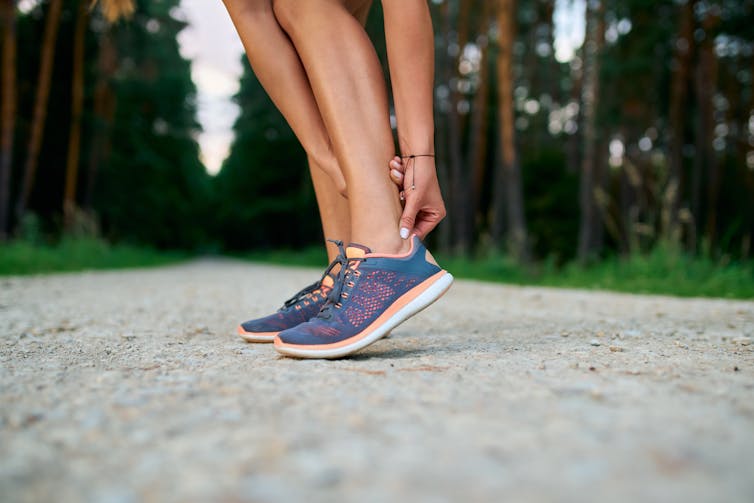When it comes to fitness, most workouts place the focus on building strength and definition in your muscles. But our muscles aren’t the only structures in our body that help us lift, run and do most of our daily tasks.
Our tendons are a key but overlooked component of our musculoskeletal system – serving an equally important role as our muscles in our ability to move.
Tendons are made up of collagenous fibres which give them their exceptional tensile strength – the amount of stress they can withstand while being stretched or pulled. They’re built to tolerate high levels of tension under load – working in tandem with their connecting muscles to transfer force and allow movement.
Tendons have a unique ability to store and release energy – similar to a spring. While this ability is especially useful when running or jumping, our tendons also work hard during everyday activities, such as walking uphill or climbing the stairs. Strong tendons may also lower our risk of falls as we get older.
But age and chronic overuse (typically seen in athletes) can increase the risk of tendon rupture. Fortunately, the right kind of exercise can help us build tendon strength and keep them fit.
Tendon health
In order to build strong tendons, the aim is to make them stiffer.
This might seem contradictory, as stiffness is the opposite of what we’d want to experience in our muscles and joints. But in tendons, this is an essential adaptation that helps them manage the pressures placed on them. Tendons that are stiffer can transmit force from muscles to bones more effectively – improving how efficiently we move.
It might help to imagine the spring within a pogo stick. If the spring was loose, you’d probably find it pretty hard to bounce. But when the spring is taut, you’ll find it much easier.
In order to build strong, stiff tendons, you need to challenge them with resistance – such as weights. Research shows how heavy the load is matters more for tendon adaptation than the type of movement used. So it’s important to challenge your tendons if you want to make them stronger.
It will also take time for tendons to adapt due to their thick, fibrous nature. While muscles can build new fibres within hours, tendons have a slower recovery rate after a workout and require a few days for proper adaptation.
So to see lasting changes in tendon health, you’ll need to consistently train them over weeks and months.

baranq/ Shutterstock
It’s also important that you focus on building muscle strength at the same time you’re trying to build tendon strength. These two go hand-in-hand – and an imbalance between the two can lead to a tendon injury.
When muscles are much stronger than their tendon counterparts, the latter may become overused. This can result in tendinopathy (an overuse injury characterised by pain and being less able to bear loads). In contrast, when muscle weakness is the limiting factor, muscle injuries may occur. Workouts should aim to challenge both your muscles and tendons.
Training your tendons
Here are a few tips to help you build tendon health:
- Progress gradually: Increase the amount of stress placed on the tendons gradually so they have time to adapt to these new demands. This means steadily increasing the intensity of your workouts. Some ways of modifying intensity include adjusting the duration of your workouts or increasing the amount of weight you lift. Only modify one component of your workout at a time to avoid placing your tendons under too much stress.
- Hold it: Isometric training is where you hold a muscle contraction without moving. There are many health benefits of isometric training – not least because it effectively loads tendons, which is crucial for their adaptation. But remember the intensity of the load matters most for tendon health – so start by holding an isometric pose (such as a wall sit or calf raise) for five to ten seconds. As you get stronger, increase the intensity by holding it for longer or adding a weight. This will ensure your tendons are being challenged effectively.
- Vary your workouts: Variety can help to promote a balanced development of muscles and tendons while simultaneously reducing the overall strain on the tendon. So instead of doing the same workout multiple times in the same week, try swapping a run for a bike ride or swim. Or perhaps focus on an upper body workout instead of another lower limb strength session.
- Take a rest: Taking rest days between workouts is important not only for helping your tendons to adapt, but for avoiding an injury from overuse. While the amount of recovery time you’ll need will vary from person to person, as a general rule leaving a rest day or two between high-impact activities will go a long way towards helping you recover. If you aren’t keen on taking a day off from activity entirely, active rest (such as a gentle walk) can also be useful as this still allows your tendons to heal without straining them.
The more active you stay in your everyday life, the healthier your tendons will stay. This will make it easier for you to do your day-to-day activities in the long run, while also reducing your risk of injuries.
Alex Walker, Lecturer in Sports Therapy, University of East London and Lee Brown, Senior Lecturer, Strength and Conditioning, University of East London
This article is republished from The Conversation under a Creative Commons license. Read the original article.









